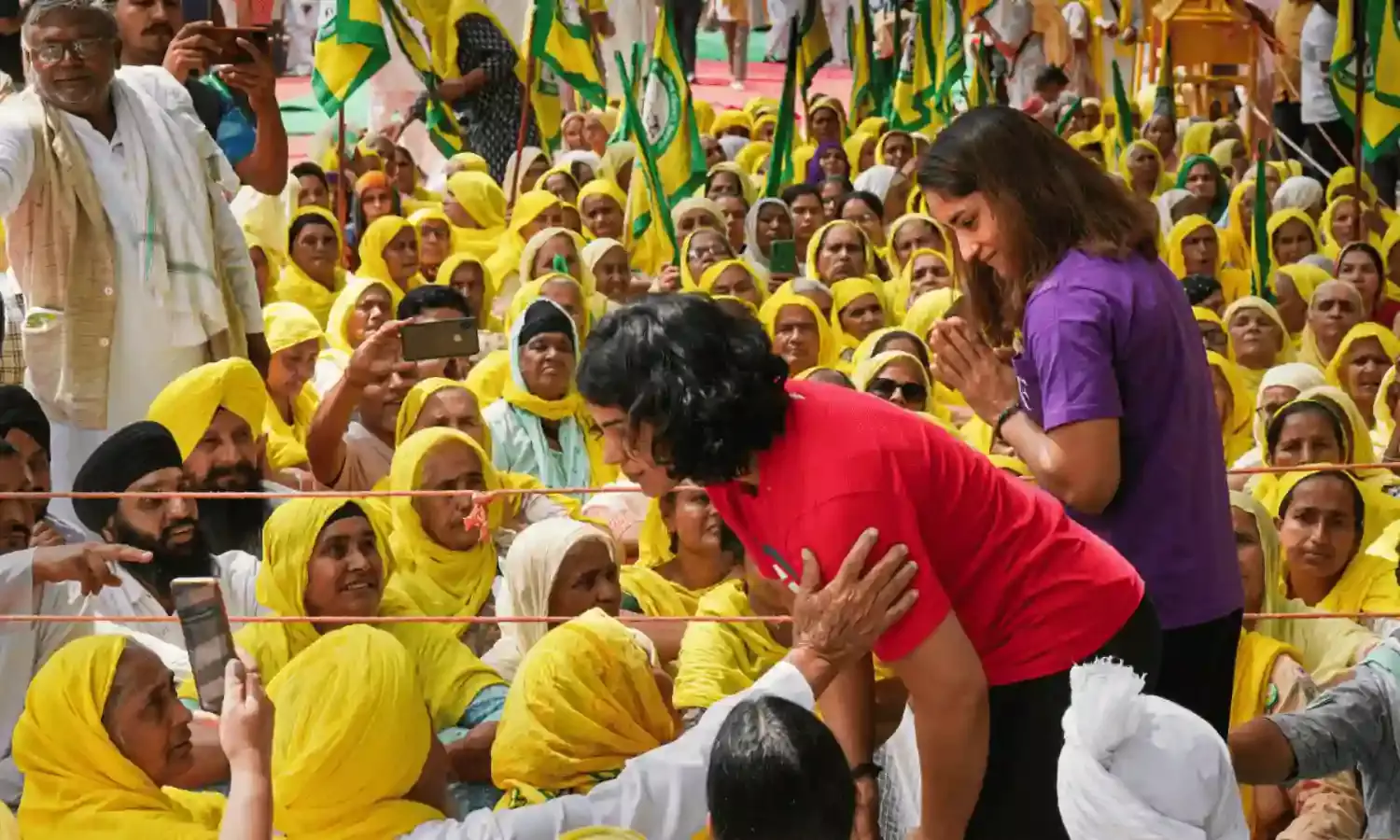2 Women Led Movements in Delhi, 6 Similarities
Khaps from Haryana extend support to the women wrestlers;

Two young women wrestlers Sakshi Malik and Vinesh Phogat who have done their country proud in the sports arena, emerged from the shadows that women athletes are often thrust into, with a dharna in Delhi. A protest demanding the arrest of a BJP legislator who they accused of sexual assault.
It was a small affair to begin with, attracting attention mainly because of the talented sports women who did have silent support. Most millingaround expected the government to take action against the member of parliament Brij Bhushan Sharan Singh for the sexual harassment charge.
It did not happen. The girls started being isolated, and vilified. They were reduced to tears, when suddenly the dam of silence burst. And people have since poured out of their homes to support the ‘betis’, hold their hands, strengthen their perseverance and determination. The crowds are becoming bigger, politicians of course but farmers, women farmers, students, civil society groups, civil society per se, are all flocking to the dharna site in Delhi to support the girls and be part of what is becoming yet another woman led movement.
The movement has received a major boost with the announcement from Khaps in Haryana that they will join the girls on May 28 in Delhi. And along with the farmers and others march to the New Parliament building that is scheduled to be inaugurated on that day, to register their demand for the arrest of Singh. Significant, as the Khaps in Haryana have been known to take extremely regressive positions against women but in this case appear united in support of their girls.
The similarities with the first huge woman-led protest against CAA are striking. The women are different, in that the anti-CAA led women were Muslim housewives and grandmothers take the initiative to protect their men folk, and come out on to the Shaheen Bagh locality road to insist that the government withdraw the amendment to the Citizenship Act. And the ‘dadis’ were in the lead, whereas here the ‘betis’ were in charge. But short of that the similarities carry a powerful message.
One, both protests started as small and in sheer desperation for rights and security. The women came out to protect their men, themselves, and their homes. To give themselves a future free from harassment.
Two, both turned into a movement. Within days and weeks. A carnival site almost with the old and the young, all genders, joining the women in support. The opposition parties were ahead of others in supporting the women wrestlers, and fairly delayed in endorsing the anti-CAA movement. But no such hesitation was visible amongst the people, with the farmers turning up in large numbers for the protests. Particularly the women farmers.
Three, both touched a sensitive emotion in India. An undercurrent that exists despite the harassment and repression of women. A support for women when it comes to harassment by the state or by powerful individuals, an embrace for justice that turns into outright support regardless of religion or caste. Women do manage to transcend such boundaries as is evident in both protests, where gender overtakes other considerations. And results in unity.
Four, both protests were exacerbated by the government’s refusal to take action and restore a perception of justice. The women, despite not wanting to, remained on the streets for far longer than they had initially planned.
Five, the apolitical nature of both protests. Despite rumours neither was backed by political parties; women in both instances came out for their rights; and steered free of politics. This in fact, added to their support in both instances.
And six, peace. Both movements have made the maintenance of peace essential to the protest, a meeting ground of songs and theatre, and paintings and not of political speeches or rabble rousing.
The authorities cannot take such movements for granted, and wish them away. This is clear from the trajectory between the anti-CAA movement to the present protest led by the young wrestlers. The one is not linked to the other. Both are independent movements, but there is a sense of continuity because of the above factors. A discipline for peaceful but determined protest is being established, a working together in unity and harmony and peace, for rights and justice. The peoples support makes the coming together powerful, as governments cannot afford to tamper with the Indian sentiment for its women with violence and bloody scenes.
May 28 could be a litmus test of sorts as the Haryana Khaps have a formidable reputation. As do the Delhi police and the government in power. All can end with the arrest of one BJP MP from Uttar Pradesh.

